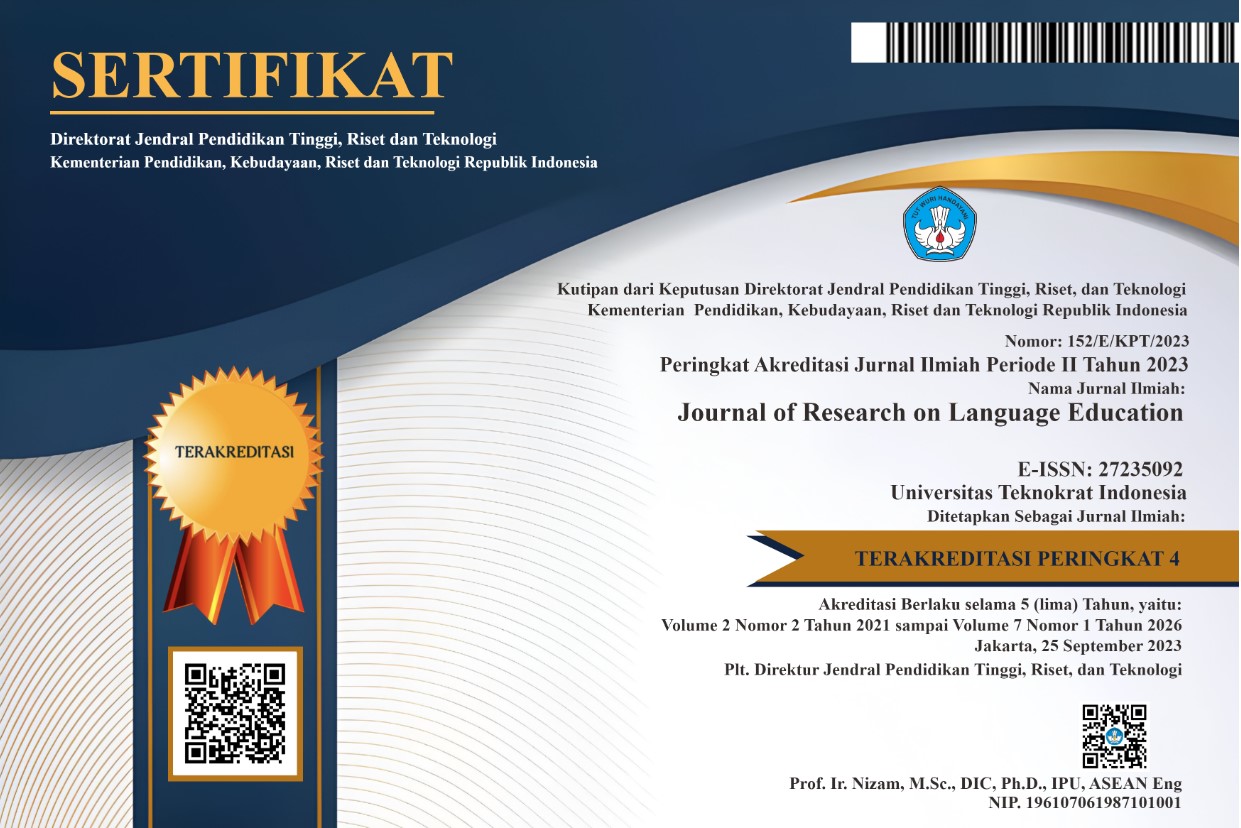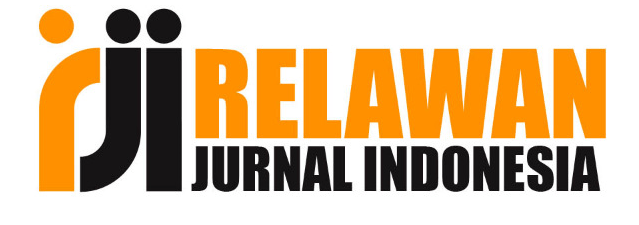WEBTOONS POTENTIALS TO ENHANCE EFL STUDENTS VOCABULARY
Abstract
This paper aims to show the use of Webtoon for EFL students to get more vocabulary either by the dialogue or even just the picture itself because it also can increase the level of curiosity and let them create new words. Webtoon has been known as one of the e-comic applications that are loved by young generations because it is simple yet fun. The use of outstanding visual and daily basis dialogues will surely help students understand the meaning of the whole scene. The method of the research used qualitative descriptive. The technique of collecting data and the data are questionnaires from EFL Learners that also use webtoon on their daily activity as well as English teachers who use webtoon in their class. Overall EFL learners who are also webtoon users found that the application helps them to create new words by seeing the visualization along with the dialogue.
Keywords
Full Text:
PDFReferences
Al-Falaq, J. S., Suprayogi, S., Susanto, F.N., & Husna, A U. 2021. Exploring The Potentials for Literature Class. Indonesia Journal of Learning Studies. 1(2).
Aminatun, D. & Oktaviani, L. (2019). Memrise: Promoting Students’ Autonomous Learning Skills through Language Learning Application. Metathesis: Journal of English Language, Literature, and Teaching, 3(2), 214-224. DOI: 10.31002/metathesis.v3i2.1982.
Arsyad, Azhar. (2011). Media Pembelajaran. Jakarta: Raja Grafindo Persada.
Erzad, A.M., Suciati, S. (2018). Social Media For Improving Students’ English Quality.Jurnal Edulingua. 5(1), 8-14.
Haryanto, E, Sulistyo, U, Khairani, M., Wulan, R. (2016). Indonesian or English? EFL Student Teachers’ Preference and Perception on the language use in the classroom. Indonesian Journal of English Education. 3(1) . 46–59.
Bertamini, M., & Makin, A. D K. (2014). Brain Activity in Response to Visual Symmetry. Symmetry Journal. 6(4), 975-996.
McCoog, I. J. (2008). 21st Century Teaching and Learning. Retrieved on June 1 2021 at https://files.eric.ed.gov/fulltext/ED502607.pdf
Haron, N. N., Zaid, Y. H., & Ibrahim, N. (2015). E-Learning as a Platform to Learn English among ESL Learners: Benefits and Barriers. Research in Language Teaching and Learning. 7. 19-105.
Oktaviani, L. & Desiarti, E. (2017). A Lecturer’s and Students’ Perspective Toward Ethnic Snake Game in Speaking Class at Universitas Muhammadiyah Malang. TEKNOSASTIK: Journal Bahasa dan Sastra, 15(2), 53-59. DOI: https://doi.org/10.33365/ts.v15i2.98
Oktaviani, L. & Mandasari, B. (2020). Powtoon: A Digital Medium to Optimize Students’ Cultural Presentation in ELT Classroom. Teknosastik: Jurnal Bahasa dan Sastra, 18(1), 33-41. DOI: https://doi.org/10.33365/ts.v18i1.526.
Oktaviani, L., & Sari, F.M. (2020). Reducing Sophomore Students’Dilema in Creating an Appealing Teaching Medium Through Slidesgo Usage. Jurnal IKA PGSD (Ikatan Alumni PGSD) UNARS, 8(2), 342-349.
Pranoto, B. E., & Suprayogi, S. (2021). Incorporating 9gag memes to develop EFL Learners’s Speaking Ability and Willingess to Communicate. IJEE (Indonesian Journal of English Education). 7(2) 130 -144.
Putri, A. (2018). The Use of Webtoon and KWL (Know-Want-Learn) Strategy to Improve Students’ Reading Fluency, 112. Undergraduate Thesis. IAIN Salatiga, Jawa Tengah.
Simamora, M. W. B., & Oktaviani, L. (2020). What is Your Favorite Movie?: a Strategy of English Education Students to Improve English Vocabulary. Journal of English Language Teaching and Learning, 1(2), 44-49. DOI: https://doi.org/10.33365/jeltl.vli2.604
Supitri, S. (2019). The Effect of English Comic Webtoon on Students’ Reading Comprehension at Madrasah Tsanawiyh Negeri 2 Muaro Jambi. Undergraduate Thesis. UIN Sulthan Thaha Saifuddin. Jambi
Suprayogi, S, Pranoto, B. E. (2020). The Implementation of Virtual Exhibition Project in English for Tourism Class for University Students. Academic Journal PERSPECTIVE: Language, Education and Literature. 8(2).
Suprayogi, S, Pranoto, B. E. (2020). Virtual Tourism Exhibition Activity in English for Tourism Class: Students’ Perspectives. Celtic: A Journal of Culture, English Language Teaching, Literature, and Linguistics. 7(2). 199-202.
Wahyudin, A.Y. (2020). Penggunaan Komik Toondoo dalam Pembelajaran Bahasa Inggris tingkat Menengah. Journal of Social Sciences and Technology for Community Service (JSSTCS). 1 (1) 1-6.
Wijayanti, S. (2018). Students’ Vocabulary Achievement in Grade VII A at SMPN 7 Jember by Using Visual Media. Advances in Social Science, Education and Humanities Research.
Wulandari, R.A., Lestari, R.E., Utami, S.L. (2019). The Effectiveness of Webtoon for EFL Student in Mastering Vocabulary. The 1st Conference of English Language and Literature (CELL).
Zalmansyah, A. (2013). Increasing the Students’ Vocabulary by Using Comic Strips as An English Teaching Media. K A N D A I , 2(6), 262-275.
DOI: https://doi.org/10.33365/jorle.v2i2.1311
Refbacks
- There are currently no refbacks.

This work is licensed under a Creative Commons Attribution-NonCommercial-ShareAlike 4.0 International License.

Articles published in Journal of Research on Language Education is licensed
under a Creative Commons Attribution-ShareAlike 4.0 International License.
English Education Study Program, Faculty of Arts and Education.
Universitas Teknokrat Indonesia
Zainal Abidin Pagaralam 9-11 Bandar Lampung, Indonesia
All rights reserved.








